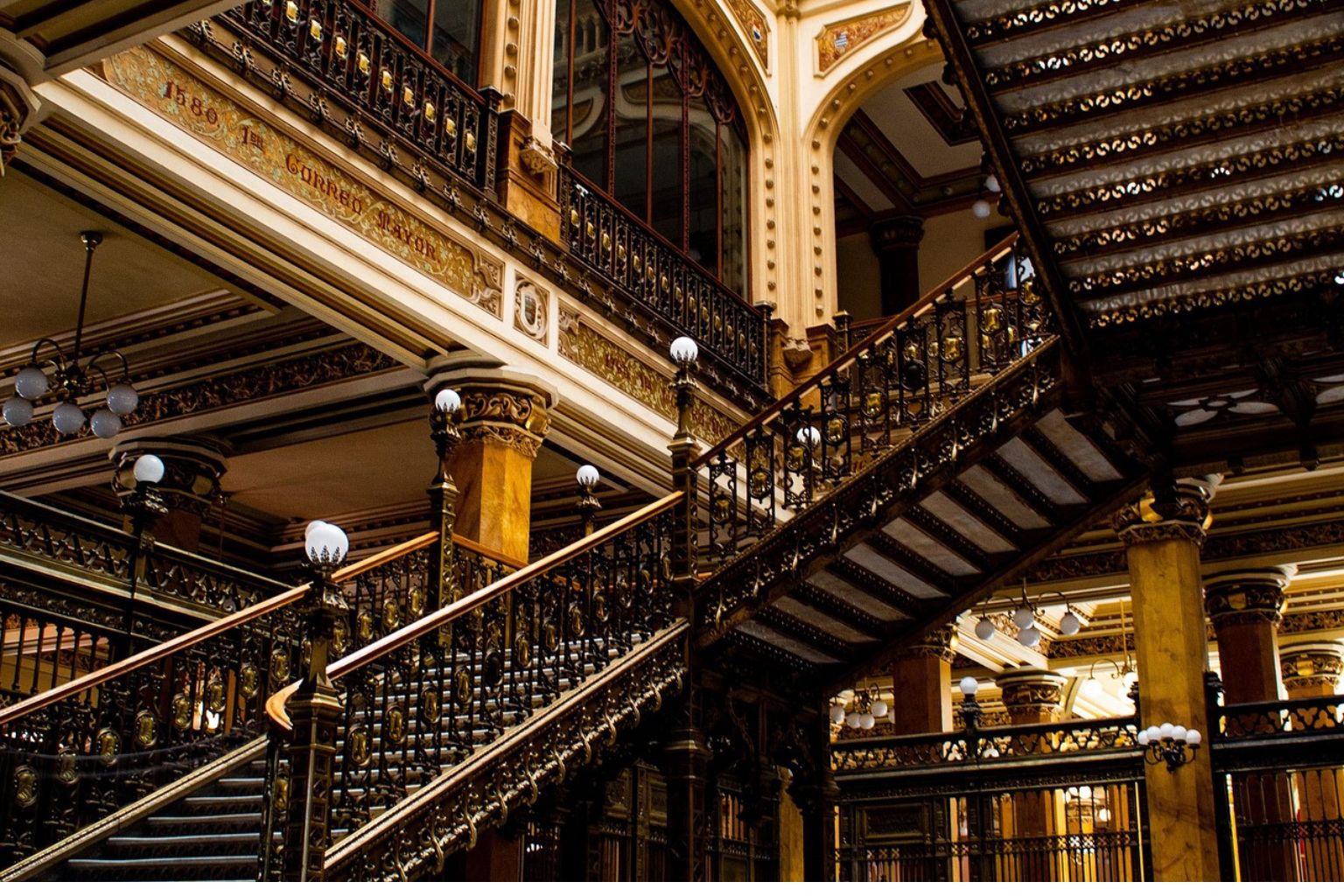
Saddle Stitch vs. Machine Stitch: What Sets Hermès Craft Apart
Check out our Hermès collection and Birkin bags!
When you think about what makes Hermès bags command those wild price tags, the secret’s often in the details you’ll never really see.
The saddle stitch technique Hermès uses in certain pieces creates a seam that’s basically bombproof, outlasting even the leather itself. Machine stitching? If one thread breaks, the whole thing can unravel.
That’s not just a fancy sales pitch. It’s a real, tangible difference that sets genuine luxury apart from the world of mass production.
Here’s something that might throw you: even Hermès doesn’t hand-stitch every single inch. We love the image of an artisan lovingly sewing every seam, but truth is, only about 10-15% of a Kelly or Birkin gets the full saddle stitch treatment.
The rest? High-quality machine stitching, so good most folks wouldn’t spot the difference.
Why care about these stitching methods? Well, it’s not just about swooning over craftsmanship. Knowing the difference helps you understand what you’re shelling out for, and maybe even spot the real deal in a market full of fakes.
Whether you’re eyeing your first Hermès or adding to a collection, being able to tell saddle stitch from machine stitch will change how you look at luxury leather forever.
Key Takeaways
- Saddle stitching uses one thread and two needles, making interlocking stitches that hold even if one breaks. Machine stitching uses two threads, if one snaps, the seam can fall apart.
- Hermès mixes both, hand-stitching high-stress spots and using machines elsewhere for speed and efficiency.
- You can spot authentic Hermès by looking at stitch angle and regularity, little visual cues that separate the genuine article from the fakes.
Saddle Stitch vs. Machine Stitch: Key Differences
The real differences between saddle and machine stitching come down to how they’re made, how tough they are, and how they look. Getting these details helps you see why brands like Hermès pick one method over the other.
Hand Stitching Versus Sewing Machine
Saddle stitching? That’s a single thread, two needles, and each stitch goes all the way through both layers of leather. Skilled hands do it, hole by hole.
Machines use two threads from separate spools, making a lock stitch, one thread sits on top, the other underneath.
The process couldn’t be more different. Hand stitching means marking and punching each hole, then threading both needles through from opposite sides. Machines just punch and stitch in one go, way faster.
Time-wise:
- Hand stitching: Takes hours, even for pros.
- Machine stitching: Minutes, sometimes less.
That time gap is why even luxury brands use machine stitching for most seams, Hermès included.
Lock Stitch and Stitching Strength
When you pull at the seams, the difference shows up fast. Saddle stitching interlocks each stitch, so if one goes, the rest stay put.
Machine-stitched seams rely on two threads holding tension. If one breaks, the whole seam can start to unravel. Not ideal for anything that’s going to see real use.
Durability:
- Saddle stitch: If one stitch fails, the seam stays strong.
- Lock stitch: One break, and you risk losing the whole seam.
That’s why saddle stitching started with saddlemakers, those seams had to survive serious punishment. The thicker, waxed threads used in hand stitching only add to the longevity.
Visual Indicators in Leather Goods
Once you know what to look for, spotting the difference isn’t that tough. The angle of the thread is a dead giveaway.
Spotting the stitch:
- Machine stitch: Thread angles up on the front.
- Saddle stitch: Thread angles down on the front.
Flip it over, and you’ll see more. Hand-stitched seams look pretty much the same on both sides; machine stitching gets a bit messier on the back.
Stitch regularity is another clue. Machines are perfect, every stitch is identical. Hand stitching? There’s always a little variation, but in the hands of a master, it’s subtle.
The thread itself tells a story. Saddle stitching uses waxed linen, giving it a certain look and feel. The way the threads cross in each hole creates a texture you just don’t see with machine stitching.
Even Hermès uses machines for most seams, saving handwork for places that really need the strength, handles, joints, and so on.
Hermès Craftsmanship: The Role of Saddle Stitching
Hermès saddle stitching turns leather goods into something more than just accessories. It’s a craft honed over generations, giving their pieces a kind of durability and style you just don’t find elsewhere.
Why Hermès Chooses Traditional Techniques
Ever wonder why Hermès still does things the old way? It comes from their roots as saddlemakers.
Saddle stitching wasn’t about tradition, it was about survival. If a saddle seam failed, it could be a disaster for the rider.
Hermès took that technique and ran with it for their bags. Two needles, both loaded with waxed linen, go through the same hole at the same time, looping around each other for a rock-solid bond.
This double-thread system is why, if one thread snaps, the seam holds. Machine stitching can unravel in one go.
It takes time, a single Birkin needs 4-6 hours of stitching. Each stitch sits at a 18-degree angle, giving that signature slant.
Could machines do it faster? Of course. But Hermès sticks to tradition because it gives their bags a kind of character and longevity you just can’t fake.
The Myth of Entirely Hand-Sewn Bags
Let’s clear up a myth: not every inch of a Hermès bag is sewn by hand. There are debates online about which leathers get more handwork, but here’s the reality.
Every Hermès bag is heavily handcrafted. Still, not every process is manual. Leather prep uses modern tools for consistency.
Where does the handwork count? Structural spots, handles, straps, main body seams, get the full saddle stitch treatment because they take the most abuse.
Interiors and low-stress parts might get machine-stitched. Hermès puts the handwork where it matters most, for durability and looks.
One artisan still assembles each bag from start to finish, which keeps quality high and adds a personal touch.
When they say “handmade,” it’s about the philosophy, balancing old-school craft with practical production.
Signature Styles: Hermès Saddle Stitch vs. Industry Norms
Hermès saddle stitching stands out, no question. It’s got a look competitors just can’t quite copy.
How it looks:
- Hermès: Stitches slant at 18 degrees, spaced just so.
- Machine stitching: Perfectly straight, all the same.
- Hermès: Little irregularities that show a real person’s touch.
- Others: Too perfect, almost cold.
The saddle stitch actually sits a bit raised on the leather. Two threads through each hole add bulk.
Thread choice matters, too. Hermès uses waxed linen that ages beautifully and stays strong. Most others go with synthetics to save money, but it doesn’t last as long.
Most brands chase speed and consistency. They use great machine stitching, and it looks good at first.
Hermès picks character over flawless perfection. Those tiny imperfections? They’re proof of real craftsmanship.
That’s why Hermès bags last for generations, while many machine-stitched bags eventually need replacing.
Stitching Techniques: Tools and Methods
The magic of saddle stitching comes from the tools and the prep, stuff that really separates true luxury from the rest. Each tool has a job, and together they create the hand-stitched look Hermès is known for.
Using Awls, Needles, and Beeswax
The awl is where it all starts. It’s used to punch clean, angled holes through the leather before any thread goes near it.
Sewing machines punch and sew in one go, but hand-stitching needs each hole planned out. The awl’s sharp, diamond tip makes perfect entry points for the needles.
Harness needles aren’t like regular sewing needles. They’ve got blunt tips and big eyes to handle thick, waxed thread without tearing the leather.
Both ends of the thread get a needle, and you work them in a figure-8 through each hole. That’s what makes saddle stitching so tough, if one stitch breaks, the rest are fine.
Beeswax is rubbed into the thread to make it strong and water-resistant. You pull the thread across a wax block a few times until it’s good and coated.
The wax keeps the thread from fraying and helps it slide through the leather. It’s a little extra work, but it pays off in the long run.
The Setup: Sewing Clip and Marking Wheel
The sewing clip (or stitching pony) holds the leather steady at just the right angle. That way, both hands are free for the needles.
Without it, the leather would shift and the stitches would go wonky. Machines use feeds to keep things straight, but hand-stitching depends on a steady setup.
Marking wheels roll along the leather, leaving tiny marks to show where each stitch will go.
Stitch spacing usually runs 8-12 per inch, depending on the leather and the look you want. Hermès often goes tighter for their finer pieces.
Pricking irons come next. They’re hammered along the marked line, making shallow marks for the awl to follow.
This step-by-step approach keeps every stitch lined up and straight, something you’ll spot in high-end leather goods.
Quality, Durability, and Aesthetics Compared
The differences between saddle and machine stitching really show up in how strong, repairable, and good-looking the finished product is. That’s why Hermès sticks with hand stitching for the most important parts.
Strength and Longevity
Saddle stitching just makes a tougher seam. Two needles pass the same thread through each hole, locking every stitch.
Machines use two threads that lock in the middle of the leather. If one breaks, the seam can fall apart fast.
Why it matters:
- Saddle stitch: One bad stitch? The rest hold.
- Machine stitch: One thread snaps, and the seam can fail.
- Thread: Hand stitching uses waxed linen, which is way tougher than standard machine thread.
The wax on the thread does a lot, strengthens it, stops fraying, and helps it lock tight.
Honestly, with well-made hand stitching, the leather usually gives out before the seam does. That’s why vintage Hermès bags from decades ago still look and work great.
Repairability and Upkeep
Saddle stitching is way easier to repair. If a hand-stitched seam needs work, you can fix just the problem area.
Machine-stitched seams? Once they start to go, you often need to redo a whole section.
Repairs:
- Hand stitching = spot fixes.
- Machine stitching = bigger jobs.
- Matching thread is simpler with handwork, too.
Because each saddle stitch stands alone, repairs don’t weaken the rest. That’s a big reason these bags keep their value so well.
Aesthetic Details: Consistency and Character
Machine stitching is always perfect, every stitch is identical, flat, and neat. It looks clean, but honestly, it’s a bit soulless.
Saddle stitching has tiny variations in angle and tension, giving depth and character. These aren’t mistakes, they show a human made it.
Look and feel:
- Machine: Flat, uniform, almost sterile.
- Saddle: Subtle texture, slight unevenness, more visual interest.
- Thread: Hand stitching often pops more, becoming part of the design.
Hermès loves to show off their hand stitching with contrasting thread colors. You’ll see the thread, and it’s part of the bag’s personality.
Machine stitching sits lower in the leather. Hand stitching creates tiny ridges and shadows, more texture, more life.
Efficiency and Cost: Time Versus Luxury
The gap between saddle and machine stitching comes down to time and exclusivity. Machines can spit out a wallet in minutes. Hermès artisans? They’ll spend hours perfecting one piece.
Production Speed and Labour
Machines are fast. A skilled operator can finish a simple wallet in under a minute. Hermès craftspeople might spend 45 minutes to an hour on the same thing, just for the stitching.
Hand saddle stitching is slow work. You have to cut the leather, mark every stitch, punch each hole, and then work the needles through one by one.
Hand Stitching Steps:
- Mark the lines
- Punch holes
- Thread two needles
- Stitch by hand, one at a time
Every Hermès piece represents hours of focused labor. The artisan has to keep tension and spacing just right through hundreds of stitches. That’s why Hermès makes fewer bags than machine-stitched brands, each one takes real time and skill.
Cost Implications for Luxury Items
Time is money, especially in the world of luxury goods. Saddle stitching can take 10 to 20 times longer than using a machine, and that extra labor really shows up in the price tag.
Hermès artisans spend years learning the saddle stitch. Their expertise comes at a premium, and, honestly, it should. Hermès pays for that rare skill, and you see it reflected in what you pay at the store.
Cost Factors:
- Skilled labour: Artisans with years of training vs. machine operators
- Time investment: Hours for a single piece, not minutes
- Training costs: Lengthy apprenticeships
- Quality control: One-by-one attention, not batch processing
Customers pay those high prices because they’re not just buying a bag, they’re buying craftsmanship and longevity that machines just can’t deliver.
Decoding Authenticity: Spotting True Hermès Stitching
Hermès’ saddle stitching has some quirks that machines can’t quite fake. The human touch leaves little clues, tiny imperfections, angles, and details you just don’t get from automation.
Visual Signs of Genuine Hand Stitch
Look closely at real Hermès leather goods and you’ll see what sets them apart.
The angle and consistency stand out first. Hermès stitches sit at a precise 18-degree slant all the way across. Every stitch holds that angle, giving the seam its signature lean.
But the stitching isn’t robotically perfect. There are subtle shifts in spacing and tension, just enough to show that a person did the work. These little “flaws” are actually proof you’re looking at the real deal.
Double-stitching pops up at stress points like handle bases, with two neat lines running parallel for extra strength.
The thread? It’s got a matte, waxy look. Hermès uses waxed linen, which feels textured and looks a bit muted compared to shiny synthetic thread.
Stitch holes come out a bit oval, not perfectly round. That’s because the saddle stitch pushes two needles through at once, stretching the leather just so.
When Machines Mimic the Saddle Stitch
Counterfeiters have gotten better, but machines still leave a trail.
Machine stitching is too perfect, every stitch is exactly the same, with no variation in tension or spacing. Ironically, that perfection makes fakes easier to spot.
Stitch angles wander on fakes. Machines can set an angle, but they struggle to keep it steady, especially around curves.
You’ll often see missing double-stitching at key points like handles. Machines can do it, but it’s more work, so fakes skip it.
Thread quality gives it away too. Mass-produced bags use synthetic threads that look too shiny and uniform compared to Hermès’ waxed linen.
And watch for loose threads or unfinished ends. Saddle stitching locks threads in place, while machine-sewn seams often need extra finishing, something counterfeiters sometimes forget.
Frequently Asked Questions
Let’s dig into what makes Hermès stitching so legendary, and why collectors obsess over these details.
How does Hermès' hand stitching technique enhance the durability of their bags?
The saddle stitch forms an interlocking seam. One thread passes through each hole twice, using two needles. If part of the seam breaks, the rest stays together.
Machine stitching uses two separate threads that interlock at each hole. If it fails, the seam can unravel fast.
Hermès artisans use an awl to pierce holes before stitching, so the leather stays stronger. Machines pierce and stitch at once, which can weaken the material.
Waxed linen thread adds another layer of strength. In many cases, the seam outlasts the leather itself.
What makes the saddle stitch a hallmark of Hermès craftsmanship?
Saddlemakers invented the saddle stitch for horse gear that had to last. Hermès took that tradition from their equestrian roots back in the 1800s.
Each stitch needs careful hand coordination, two needles, one awl, and a steady hand. The artisan’s job is to keep the tension and angle consistent all the way.
You can spot saddle stitching by its diagonal look. Machine stitches are more upright, while hand stitches have that unmistakable slant.
Interestingly, only about 10-15% of even the fanciest Hermès bags (think Kelly and Birkin) get fully hand-stitched. Most luxury brands, Hermès included, use machines for a lot of the work.
Can you spot the difference between a machine-stitched and a hand-stitched Hermès piece on sight?
The angle of the thread usually gives it away. Hand-stitched seams slope down on both sides. Machine stitches slope in opposite directions front to back.
Hand stitching shows little quirks, tiny irregularities in spacing and tension. Machine stitching looks almost unnaturally uniform.
The back of a hand-stitched seam looks just like the front. Machine stitching often leaves a messier underside with visible thread crossings.
Hand-stitched holes are a bit bigger and oval from the awl. Machine holes are smaller and round.
Why do Hermès enthusiasts consider the brand's stitch work to be a symbol of high-quality luxury?
Hand stitching takes time, lots of it. What a machine does in minutes, a person spends hours perfecting.
The technique isn’t just about looks. It’s a direct link to Hermès’ roots in saddlemaking, and that history matters to collectors.
Each artisan brings their own rhythm and touch to the work. You’re not just buying a bag; you’re buying a piece of someone’s skill.
And let’s be honest, if you’re spending thousands, you want it to last. Hand stitching delivers that kind of durability.
What's the real-deal with the time it takes to craft a hand-stitched Hermès bag?
A fully hand-stitched Hermès bag? You’re looking at 18 to 25 hours of one artisan’s work. Most of that goes into cutting, prepping, and hand-stitching every bit.
Even partially hand-stitched bags like the Birkin need 12-18 hours. The handwork focuses on the spots that get the most wear, handles and main seams.
Machines could do the same work in under an hour. That time gap explains a lot of the price difference.
Training someone to master saddle stitching takes two to four years. That investment in skill is part of what makes each piece so rare.
Does a machine stitch affect the resell value of a Hermès bag compared to its hand-stitched counterpart?
Most Hermès bags use a mix of machine and hand stitching, so it’s tough to draw a clean line between the two. The Kelly and Birkin, for example, still fetch the highest resale prices even though they’re only partially hand-stitched.
Honestly, collectors seem to care more about the model, leather, hardware, and overall condition than the exact stitching method. A flawless machine-stitched bag can easily beat out a hand-stitched one if the latter’s in rough shape.
When it comes to authentication, experts definitely pay attention to stitching techniques, they’re key for spotting fakes. If the stitching looks off, it’s a big red flag and can absolutely tank the bag’s value.
Sure, the hand-stitching adds to the Hermès mystique, and that’s part of the story behind those sky-high prices. But in the end, it’s really the brand’s reputation and how rare the bag is that push resale values up, not just how the stitches were made.




